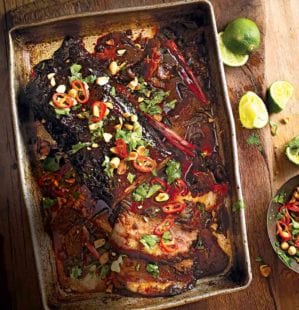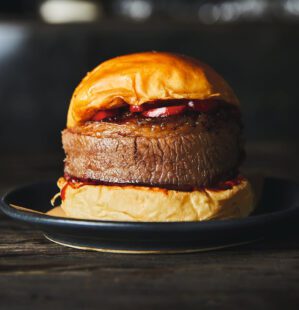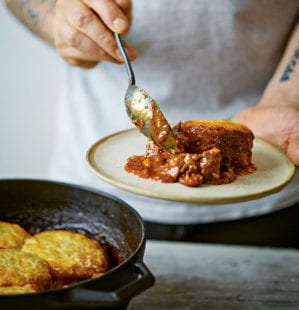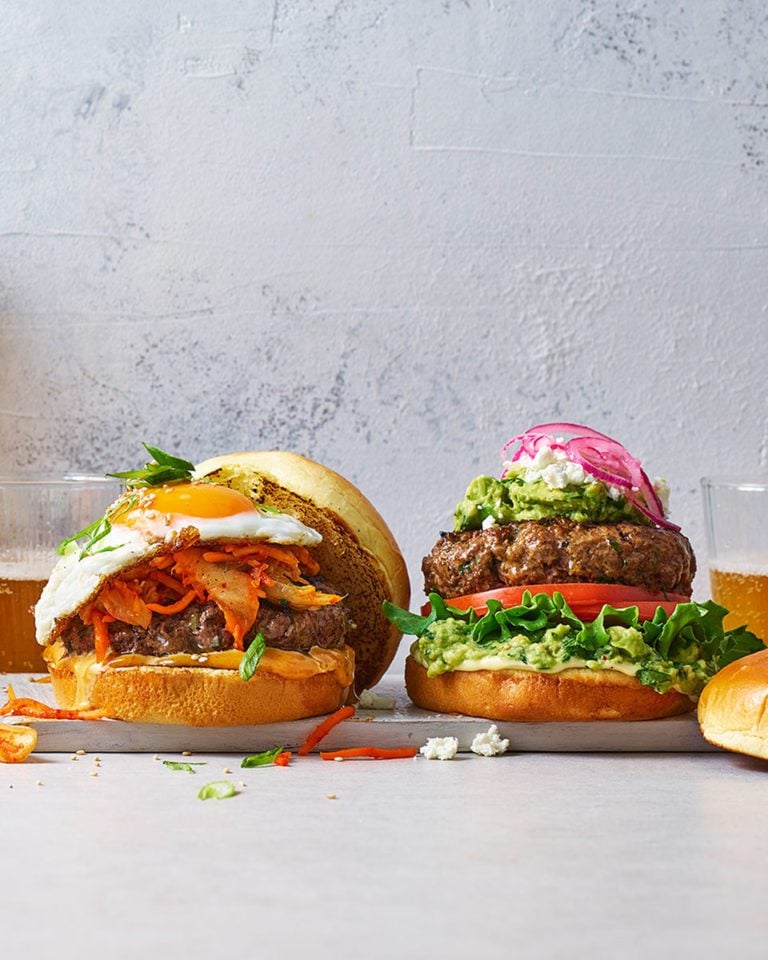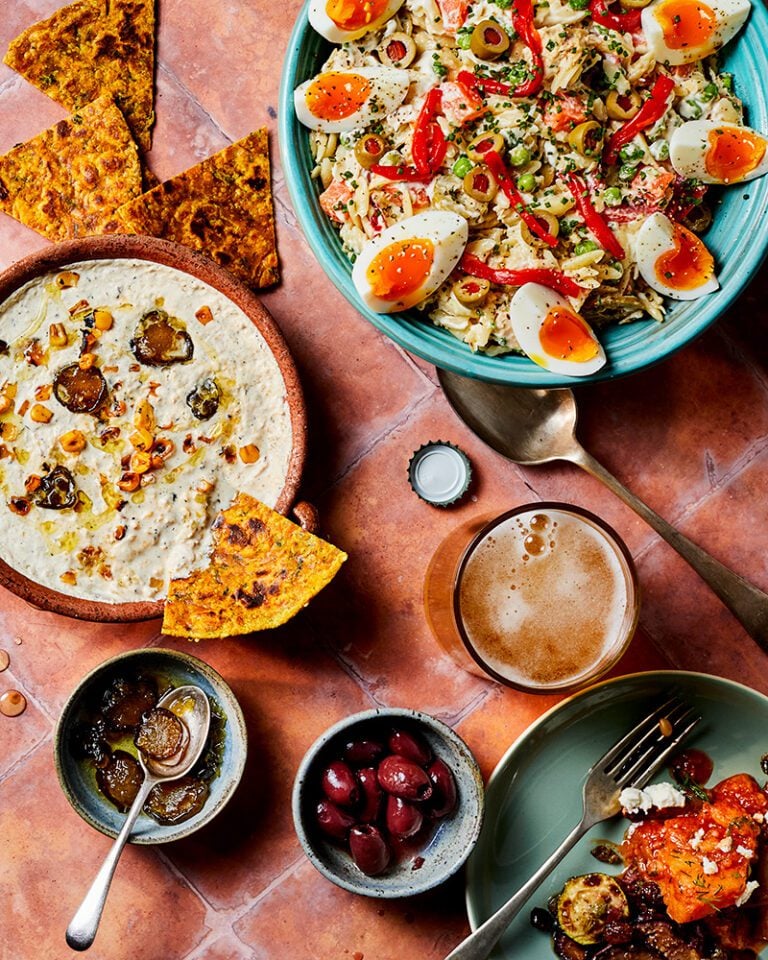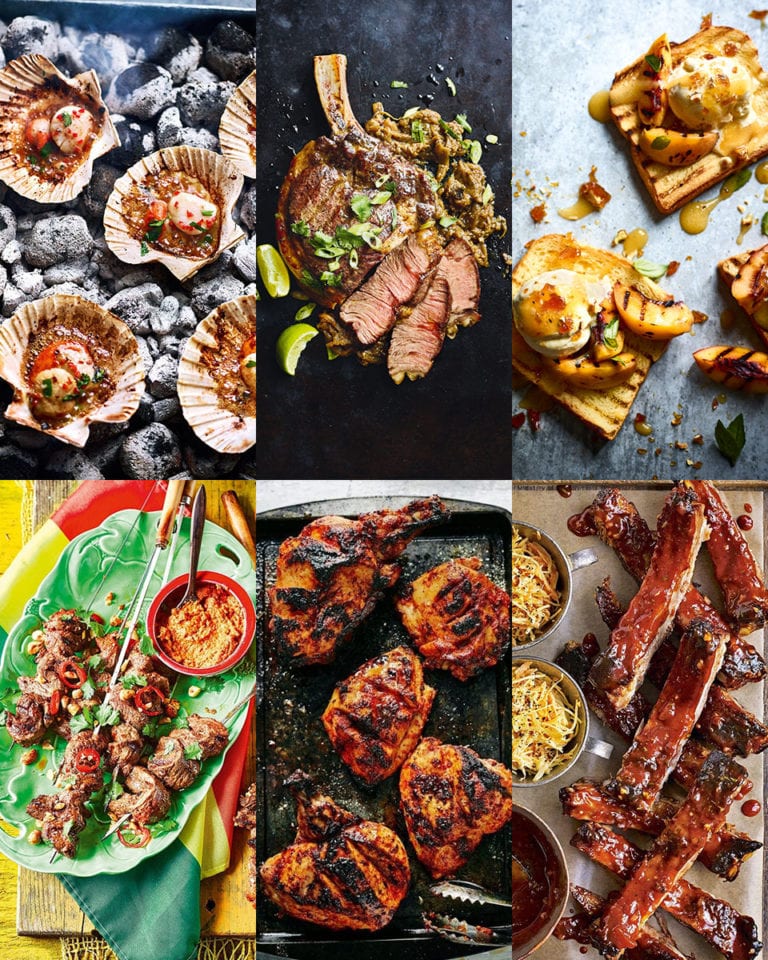How to make low ‘n’ slow smoked barbecue brisket
Brisket is the holy grail of US-style (more specifically Texan) barbecue. It’s something chef David Carter knows inside-out, and a dish that has helped keep his east London restaurant Smokestak at the forefront of the UK’s barbecue scene for over 11 years. But you don’t need a commercial smoker to cook it. “As long as you have a barbecue that’s big enough to fit a brisket in and it can be set up for indirect heat, you can smoke a brisket,” he says. David has broken down the process into five easy stages, before sharing the recipe for his restaurant’s famous brisket buns.
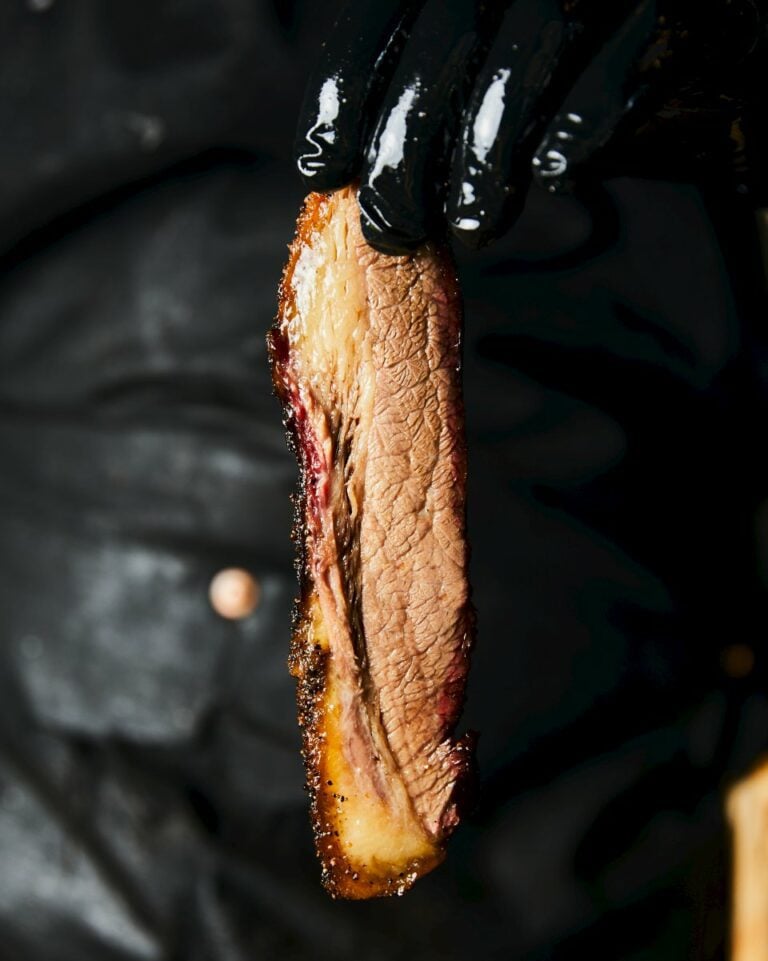
Meet brisket expert David Carter
Born in Barbados, David worked in fine dining in the USA and UK before giving it up for his first love: fire cooking. He now has four London restaurants: Smokestak, Manteca and the Greek-influenced Oma and Agora.
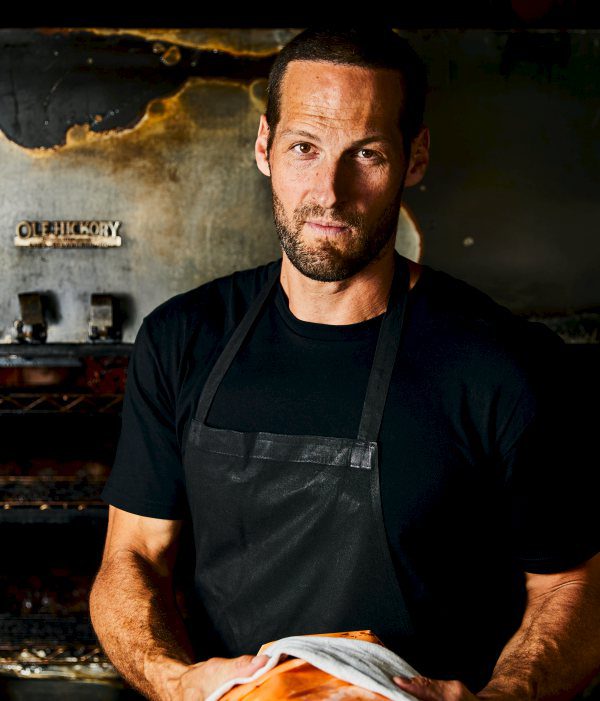
Step one: sourcing your meat
You need to go to a good butcher – the small brisket ‘joints’ you find in supermarkets won’t be suitable. Brisket comes from the lower chest of a cow, and a whole one is actually two muscles – the thinner ‘flat’ and the thicker ‘point’. “Generally speaking, the bigger the brisket, the more forgiving it is during the cook,” says David. “If it’s too small, it’s going to dry out. Ask for a whole brisket and tell them you’re planning to smoke it – they’ll know what cut you’re after.
Step two: prepping the beast
As well as size, the fat coverage is crucial. While David gets whole untrimmed briskets into his restaurant and cuts them down himself, you can ask your butcher to trim it (you can also buy briskets online that are specifically trimmed for smoking). It should have an even 1cm layer of fat on the top. “As it cooks, that fat will shrink to 5-6mm, rendering down and basting the meat below it,” says David. Any less than that and you risk a dry brisket; any more and you’ll have to trim it after cooking, meaning you’ll lose the prized ‘bark’, the dark mahogany crust that forms during the cooking.
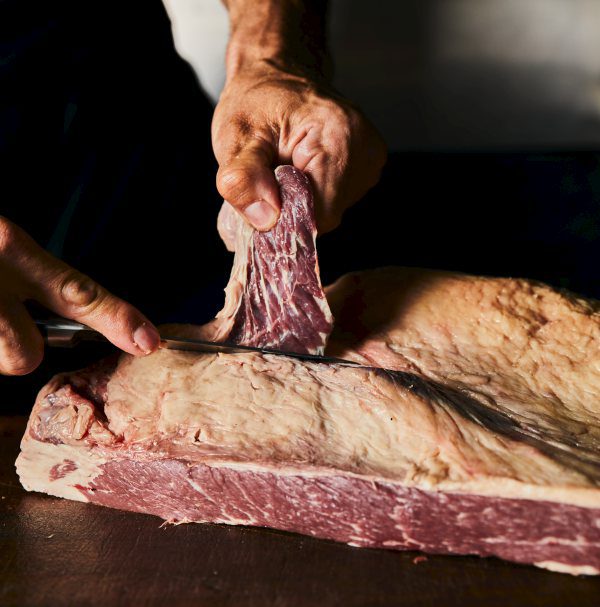
When it comes to seasoning, David uses a 50-50 mix of salt and black pepper to let the flavour of the smoke and meat shine through. Provided your rub has both these in, you can experiment with all sorts of spices and aromatics. And a long cure isn’t needed: just slap on the rub and get cooking straightaway.
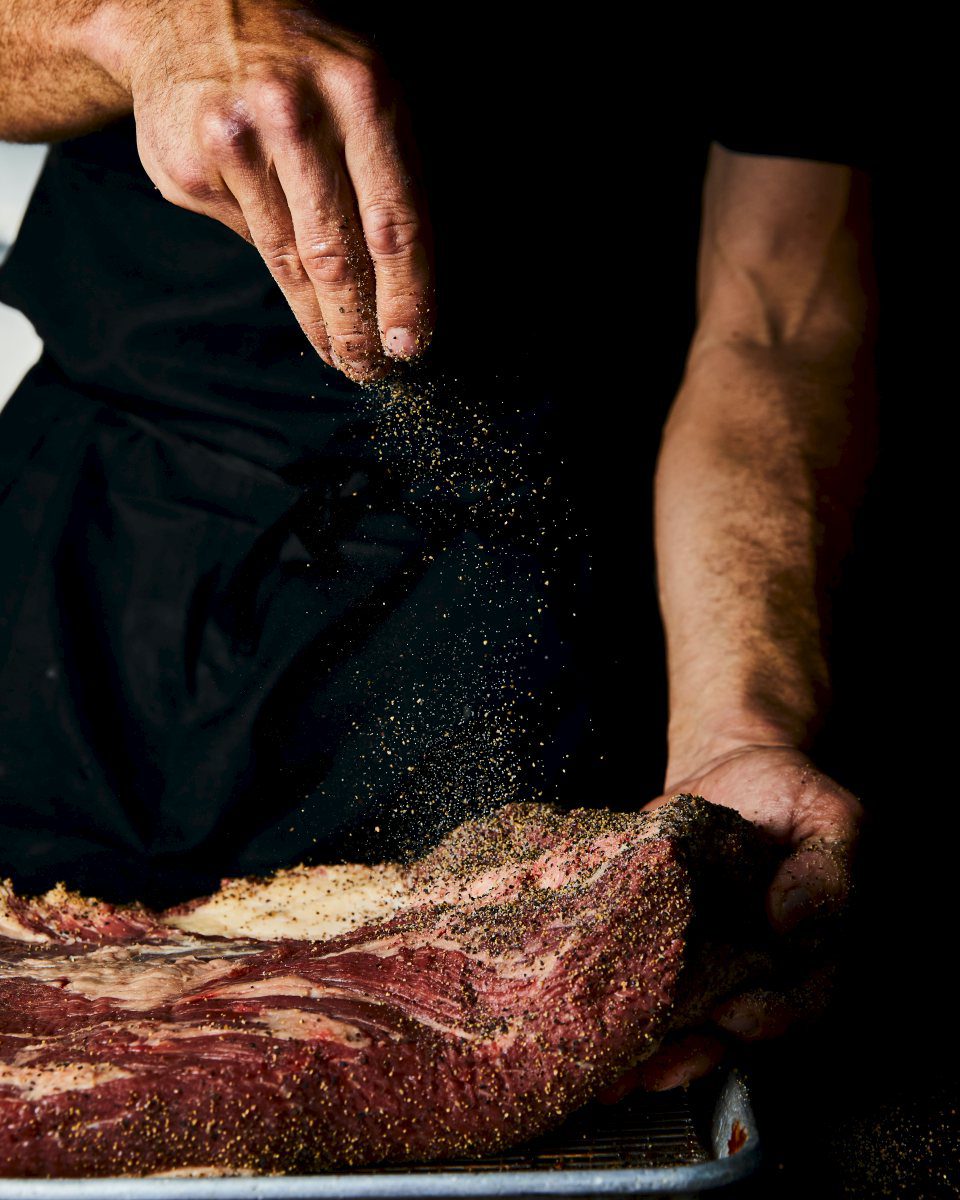
Step three: cooking your brisket
Patience is probably the most important part of low-and-slow smoking. It can’t be rushed. “You’re aiming for the temperature of your barbecue to stay between 110°C and 130°C throughout the process,” explains David. That means adjusting the vents until you get it right. “Smoking isn’t an exact science; there are so many variables… Precision doesn’t work, so embrace that; the imperfect scenario of cooking with fire is what makes it so amazing and rewarding.”
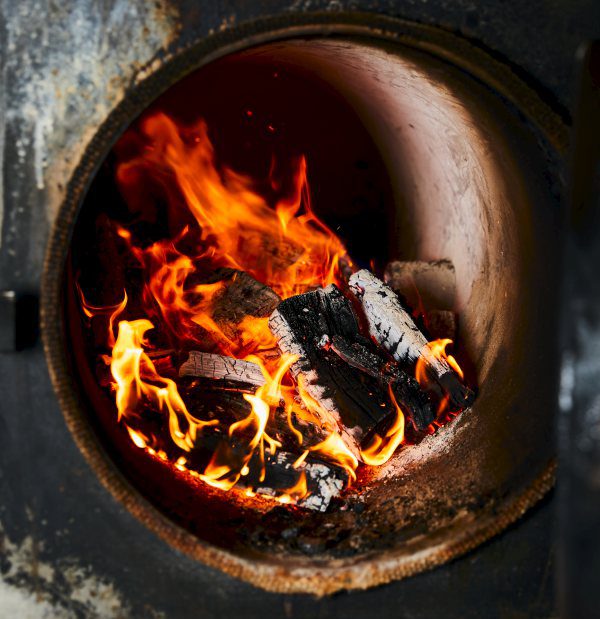
The type of smoking wood is important too. David uses British oak for a neutral, classic smoke flavour, and introduces it little and often – roughly every half hour or so. “This means the smoke stays clean and fresh. If you overload the barbecue with wood and leave it you’ll start getting harsher smoke flavours. And always soak your wood in water – especially if you’re using chips. The wood is just there to add flavour, so you want it to burn as gently as possible.”
“Smoking isn’t an exact science... It’s the imperfect scenario of cooking with fire that makes it so amazing and rewarding”
There are two stages to cooking a brisket – the long smoke (around 8-10 hours), then the final 2-3 hours when it’s wrapped in butcher paper (ask your butcher or buy it online). This lets the meat finish cooking without turning the bark on the outside too dry or chewy. “You want to wrap the brisket when the bark is at its peak; look for a deep mahogany – almost black – crust rather than a reddish brown,” explains David. “Once it’s wrapped and back in the heat, you’re relying on your sense of touch. Pick it up from the middle – it should feel like a wet balloon when ready, with either side sagging down. If it’s stiff and like a plank of wood, it’s not ready. You can also use a skewer; a cooked brisket should let it go all the way through with only a little resistance. If you have to push it through with effort, the meat’s not ready.” Or use a probe thermometer (see recipe).
Step four: the crucial resting
A cooked brisket should be rested for at least an hour, still wrapped in its paper. But it will stay hot enough to serve for at least two hours (and you can extend that even further by resting it in a cool box). So if you’re hoping to serve at 8pm, aiming for a 5-6pm ‘completed’ cook gives ample time to rest. And if it takes longer and isn’t cooked until 7pm, you still have time to rest it.
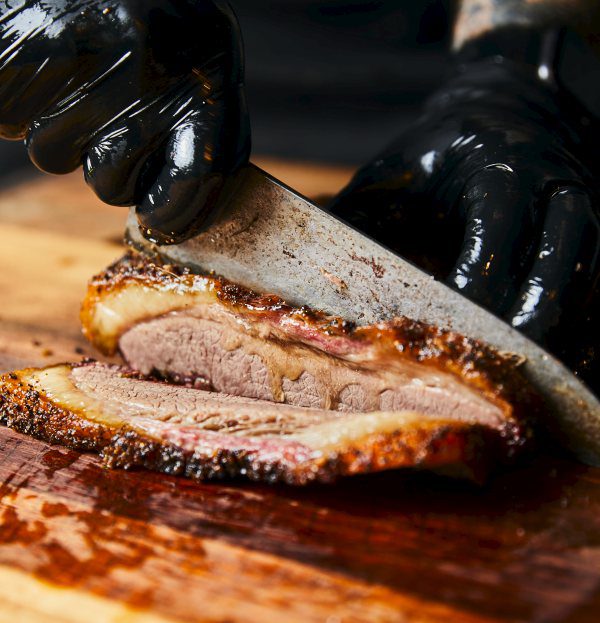
Step five: serving your creation
Prepped, smoked, wrapped, rested – now it’s time for the big reveal and to slice through that meat like butter. When slicing, always cut against the grain of the meat, but remember that a whole brisket is two separate muscles. “When the flat becomes the point, the grain changes, so you’ll need to turn your brisket 90 degrees to keep slicing against the grain,” says David. “Aim for around 5mm thick slices when cutting the flat and around 4mm slices for the point end.”
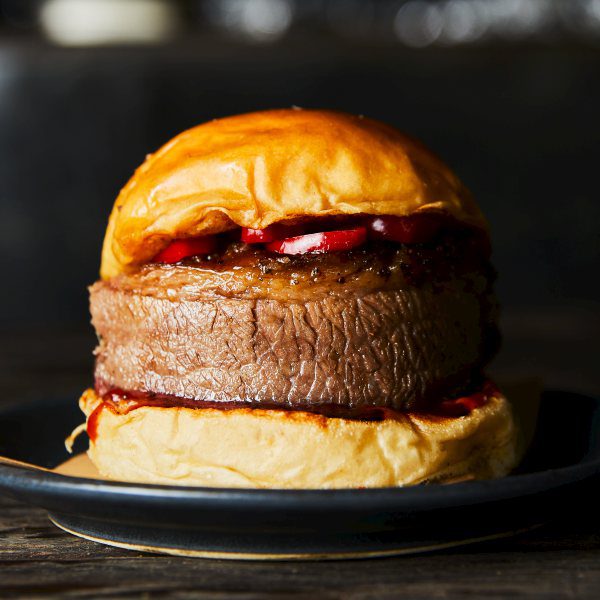
How you serve your brisket is up to you – but David’s sauces and pickled chillies are popular for a reason. The sweetness, acidity and heat cut through the rich meat brilliantly. The brisket is a thing of beauty – and well worth the time taken to smoke it to perfection.
Follow’s David’s full recipe for smoked brisket buns with mustard barbecue sauce and pickled chillies. Up for another project? How about making udon noodles from scratch?
Subscribe to our magazine
Food stories, skills and tested recipes, straight to your door... Enjoy 5 issues for just £5 with our special introductory offer.
Subscribe
Unleash your inner chef
Looking for inspiration? Receive the latest recipes with our newsletter
